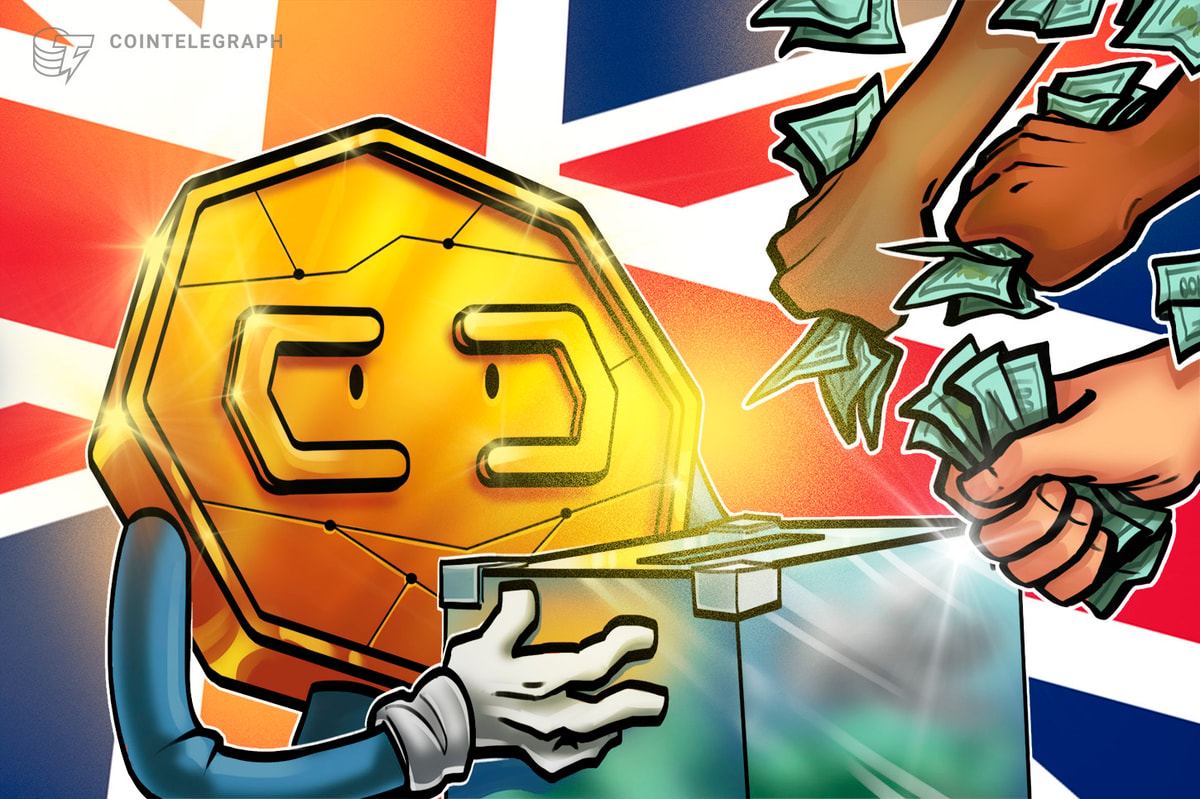It’s easy to see how a similar playbook could play out with Web3, and quickly in today’s climate.
Web3’s identity problem
Web3 is currently flying under the radar of most established businesses. It’s associated by most people with speculative cryptocurrencies and NFTs. Your average person on the street is likely reeling from having dipped their toe in the water and got burnt, or relieved that they stayed clear and didn’t lose money like some of their friends.
Enterprises are investing in initiatives using blockchain technology, but your average person doesn’t care about this.
This lack of demand keeps the web3 industry as is, relatively small. Large corporates are investing in innovation initiatives, and fintechs are finding ways to integrate with crypto assets, but the market demand isn’t large enough for technology companies to invest properly in this segment.
Google, Microsoft and AWS have active initiatives, but they’re taking a wait-and-see approach rather than trying to drive the space forward significantly like the entrepreneurs in web3 are.
It’s different for startups and smaller firms, where a user base of tens of thousands, can create a highly lucrative business.
This attitude is good for builders, as it provides them with an opportunity to create products without trying to compete directly with the well-funded incumbents.
There is however a tipping point for scale that changes platforms from being a small irrelevant business to being seen as a potential threat or competitor to an incumbent. These competitors are then swiftly acquired.
A few examples that come to mind include Google with its purchases of YouTube, Android and Deepmind, Facebook with its purchases of WhatsApp, Instagram and Oculus, and Amazon with its purchases of Twitch and Ring.
These purchases enabled these companies to establish significant market presences with key web technologies that they hadn’t developed in-house.
These large companies have near unlimited funds available for acquiring other companies, and it’s only legislators that can prevent these deals from happening.
Google, Facebook, Amazon, X and LinkedIn were all products of the World Wide Web. Apart from Microsoft and Apple who managed to reinvent themselves, they all emerged at a time when there weren’t existing large web firms scouting for acquisition opportunities.
It’s different with web3 because there are so many large web tech firms who at the first opportunity could deploy vast sums of capital to absorb successful upstarts.
We haven’t seen this happen yet, in part due to the fact that majority of the firms that have gained significant traction in web3 are in the digital assets arena. Due to a lack of regularity clarity and the perception that some of these assets are likely securities, big tech wouldn’t be unlikely to purchase these crypto firms.
However, other parts of the landscape could emerge as far more attractive.
Appchain acquisitions?
Many of the infrastructure firms that service the web3 industry, with enough scale could become natural acquisition targets for big tech.
We have firms like Alchemy, Infura and Thirdweb providing cloud-like API services for launching and developing blockchain applications.
If they reach a threshold of having hundreds of thousands of them, or even millions, it could be the catalyst that pushes major cloud infrastructure providers to look to offer their own services.
I don’t envisage AWS, Google, Azure standing by and ignoring them in such a scenario. They will likely go shopping and acquire some of the leading firms.
Some of these firms may be decentralization purists, with ambitions to move toward a fully decentralized service. But it’s doubtful that they all are. After all, an exit is good for founders and investors.
It’s hard to envisage a future where such a playbook doesn’t play out if web3 has the impact many of its proponents expect.
Especially as the economic climate has also shifted in the favour of large businesses with healthy balance sheets, who can earn healthy risk-free returns on their capital.
For the past 15 years, we had a historically low interest rate environment, resulting in cheap capital for venture firms to invest in high-risk startups. There’s no longer so much capital available for startups, stacking more of the odds against their success. This will make it harder still to challenge the dominance of big tech.
Reaching critical scale
Against this backdrop, to prevent web3 from being absorbed by web2 firms, web3 protocols and applications need to establish themselves at scale and reach critical mass quickly.
Coinbase is one firm that has established itself in this manner. Brian Armstrong is trying to grow the web3 ecosystem through initiatives such as their wallet and the Base network. We’re not likely to see Coinbase acquired by any TradFi firms.
It’s fortunate too that the settlement rails that have been built for web3, such as the Ethereum network have managed to establish themselves as internet-scale utilities and reach a size where it cannot be owned outright.
Whether new infrastructure firms will be able to do this is less clear. Those that are looking to decentralize their service will rely on volatile utility tokens and cryptocurrencies which are a significant barrier to entry in these respects.
People don’t want to pay for AWS compute using Amazon shares, and without the adoption of better stores of value such as stablecoins, it’s a barrier for many people.
Learning from history
It’s important not to overlook that the first generation of the web was much like web3 is now. With a lot of open, decentralized protocols and people building amazing innovations on top of it.
Over time much of the web shifted away from a number of the protocols that were written and replaced with proprietary protocols and platforms.
Web3 does come with its own payment rail and token incentives that projects can choose to adopt. However, the original web was not surrounded by well-capitalised companies who were already internet natives and recognised the value of such a platform for its reach.
In this respect, web3 has a more formidable challenge to stay true to its origins.
No doubt some of the core infrastructure such as the larger blockchain networks, have managed to establish themselves in this respect. But many of the upstarts building services for these networks could find themselves being absorbed in the coming years by big tech.
This would result in a landscape that doesn’t look that different from what we have currently with web2. It wouldn’t be a failure but would come as a surprise to many of the builders, who had altruistic goals of truly decentralized services.
The internet does not exist in a vacuum, some laws and regulations have significance for companies once they reach a certain size or offer a certain class of service. As we’ve seen in the US market, these can hamper businesses. Hence it’s important to remember that web3 may not play out as cleanly as everyone hopes.
Read More: blog.web3labs.com









 Bitcoin
Bitcoin  Ethereum
Ethereum  Tether
Tether  XRP
XRP  Solana
Solana  USDC
USDC  Dogecoin
Dogecoin  TRON
TRON  Cardano
Cardano  Lido Staked Ether
Lido Staked Ether  Wrapped Bitcoin
Wrapped Bitcoin  Hyperliquid
Hyperliquid  Sui
Sui  Wrapped stETH
Wrapped stETH  Chainlink
Chainlink  LEO Token
LEO Token  Avalanche
Avalanche  Stellar
Stellar  Bitcoin Cash
Bitcoin Cash  Toncoin
Toncoin  Shiba Inu
Shiba Inu  USDS
USDS  Hedera
Hedera  WETH
WETH  Litecoin
Litecoin  Wrapped eETH
Wrapped eETH  Monero
Monero  Polkadot
Polkadot  Binance Bridged USDT (BNB Smart Chain)
Binance Bridged USDT (BNB Smart Chain)  Ethena USDe
Ethena USDe  Bitget Token
Bitget Token  Pepe
Pepe  Coinbase Wrapped BTC
Coinbase Wrapped BTC  Pi Network
Pi Network  WhiteBIT Coin
WhiteBIT Coin  Aave
Aave  Uniswap
Uniswap  Dai
Dai  Ethena Staked USDe
Ethena Staked USDe  Bittensor
Bittensor  OKB
OKB  Cronos
Cronos  Aptos
Aptos  BlackRock USD Institutional Digital Liquidity Fund
BlackRock USD Institutional Digital Liquidity Fund  NEAR Protocol
NEAR Protocol  Jito Staked SOL
Jito Staked SOL  Internet Computer
Internet Computer  sUSDS
sUSDS  Ethereum Classic
Ethereum Classic